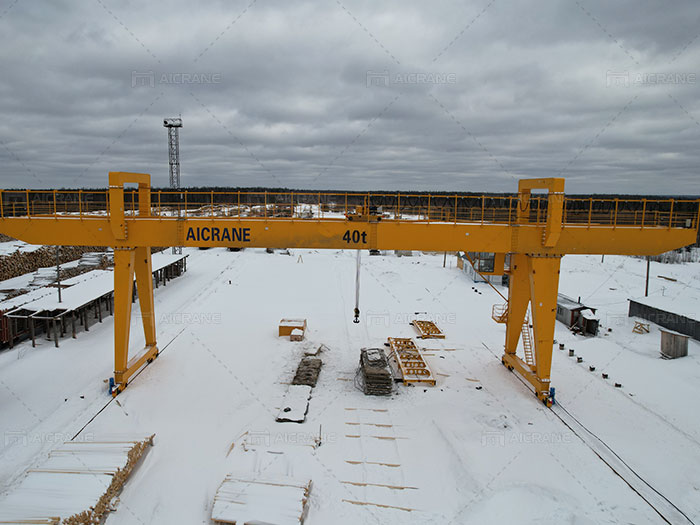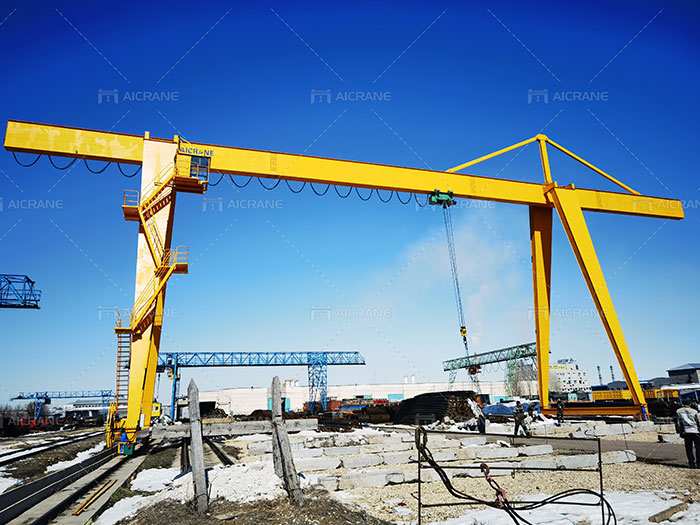When selecting a gantry crane for your operation, one of the most critical factors to consider is its capacity. The capacity of a gantry crane determines the maximum weight it can safely lift, making it an essential specification for industries like manufacturing, construction, shipping, and warehousing. Among the different types of gantry cranes, single girder and double girder cranes are the most commonly used. This article will delve into the differences in capacity between these two types of cranes, their applications, and the factors to consider when deciding which one to use.

Understanding Single Girder Gantry Cranes
Design and Structure
Single girder gantry cranes are designed with one main girder that supports the trolley and hoist mechanism. The girder is supported by two legs that run on a set of tracks or wheels. This design is simple, lightweight, and cost-effective, making single girder gantry cranes a popular choice for many industries.
Capacity and Applications
Typically, single girder gantry cranes have a capacity range of 1 ton to 20 tons. They are ideal for light to medium-duty applications such as:
- Loading and unloading materials in small warehouses.
- Maintenance tasks in workshops.
- Handling lightweight components in assembly lines.
Advantages
- Cost Efficiency: Single girder cranes are less expensive to manufacture, install, and maintain compared to their double girder counterparts.
- Ease of Installation: Their simpler design makes installation quicker and less complex.
- Lower Dead Weight: The reduced weight of the crane structure minimizes stress on the supporting foundation.

Understanding Double Girder Gantry Cranes
Design and Structure
Double girder gantry cranes feature two parallel girders that support the trolley and hoist mechanism. These girders are supported by robust legs, allowing the double girder gantry crane to handle heavier loads and larger spans.
Capacity and Applications
Double girder gantry cranes generally have a higher capacity range, from 20 tons to over 500 tons. They are suited for heavy-duty applications such as:
- Lifting heavy machinery in manufacturing plants.
- Handling containers in shipping yards.
- Moving large precast concrete components in construction projects.
- Operating in power plants and steel mills.
Advantages
- Higher Load Capacity: The dual-girder design distributes weight more effectively, allowing the crane to lift significantly heavier loads.
- Greater Lifting Height: The hoist mechanism is mounted on top of the girders, maximizing the lifting height.
- Durability: Double girder cranes are built to withstand rigorous and continuous use in demanding environments.
Key Differences Between Single Girder and Double Girder Cranes
| Feature | Single Girder | Double Girder |
|---|---|---|
| Capacity Range | 1 ton to 20 tons | 20 tons to over 500 tons |
| Cost | Lower | Higher |
| Lifting Height | Limited | Higher due to girder placement |
| Applications | Light to medium-duty tasks | Heavy-duty and industrial use |
| Installation Complexity | Easier | More complex |
| Maintenance | Simple and less expensive | More demanding and costly |
Factors to Consider When Choosing Between Single and Double Girder Cranes
1. Load Requirements
The primary consideration is the maximum weight your crane needs to lift. For loads under 20 tons, a single girder crane is typically sufficient. For anything heavier such as 100 ton, a double girder 100 ton gantry crane is a better option.
2. Operational Environment
Assess the working conditions of your site. Double girder cranes are better suited for harsh environments or continuous operation due to their durability and strength. Single girder cranes are ideal for smaller, less demanding operations.
3. Budget Constraints
If cost is a significant factor, a single girder crane might be the more economical choice. However, consider the long-term benefits of investing in a double girder crane if your operations involve heavy lifting.
4. Lifting Height and Span
Double girder cranes provide higher lifting capabilities and can cover larger spans, making them suitable for expansive facilities like shipyards and construction sites. Single girder cranes are better for confined spaces.
5. Frequency of Use
For occasional lifting tasks, a single girder crane is adequate. However, for frequent and intensive operations, the robustness of a double girder crane ensures reliability and safety.
Real-World Applications
Single Girder Example:
A small-scale manufacturing company uses a single girder 10 ton gantry crane to handle raw materials and finished products within their facility. The crane’s cost-effective design and ease of use make it an ideal solution for their moderate lifting needs.
Double Girder Example:
A port relies on a 100-ton double girder gantry crane to lift and transport shipping containers. The crane’s high capacity and durability ensure smooth operations in the demanding environment of the shipping yard.
Conclusion
The choice between a single girder and a double girder gantry crane ultimately depends on your operational requirements, budget, and working conditions. Single girder cranes are cost-effective and suitable for light to medium-duty applications, while double girder cranes excel in heavy-duty and industrial environments. By carefully evaluating your specific needs, you can select the gantry crane that offers the optimal balance of performance, cost, and reliability for your operations.
Investing in the right gantry crane capacity not only ensures safe and efficient material handling but also contributes to the long-term success of your business. Whether you need a lightweight solution or a heavy-duty workhorse, understanding the distinctions between single girder and double girder cranes will guide you to the right choice.